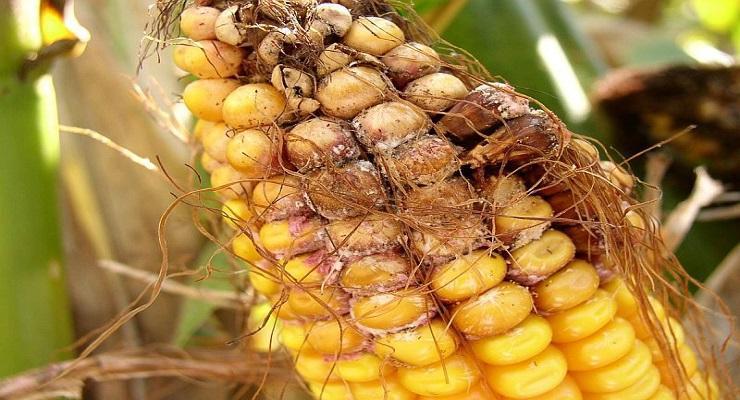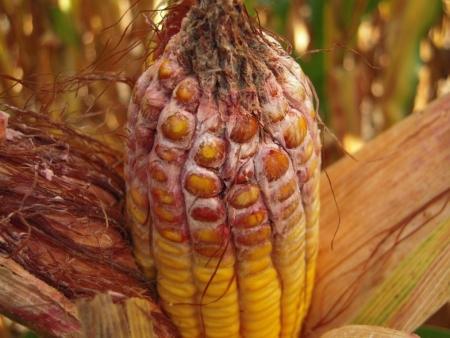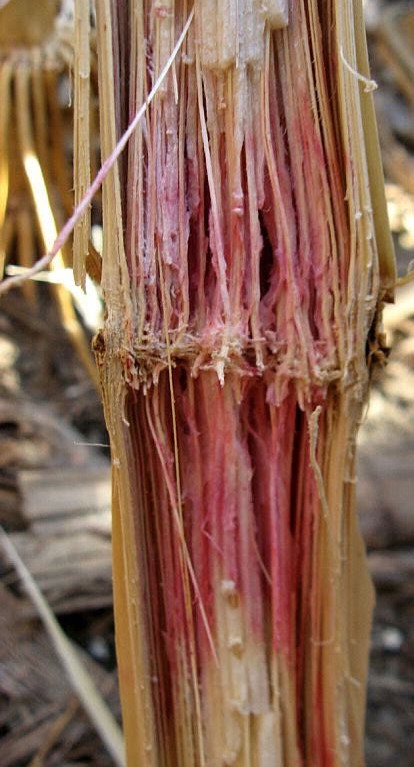Headblight of maize (Gibberella zeae) – identify and control

Headblight of maize, Gibberella zeae, is common in all corn crops but the damage caused is influenced by climatic factors.


Symptoms. The corn seeds introduced into the soil without being treated, form seedlings that can be invaded by soil mycelium or mycelium from the germination of spores found on grains. The young seedlings die before emergence and the crop shows a decrease in normal density. During the silking-fertilization, the disease is observed on the roots and on the basal part of the stem.
Infected roots turn red, rot and the plants can easily be uprooted from the soil. The basal part of the attacked stem fades then turns brown, and inside the marrow is pink-reddish. Near the nodes, white or light pink mycelial felt is observed, which causes the tissues to rot, and the plants break off as a result.
The attack on almost mature cobs is manifested by covering with pink mycelium.
As a result, the grains wrapped in mycelium lose their germination capacity and even become toxic. The attack is observed on cobs that are not well wrapped in husks or on those attacked by the corn borer. Because a rich mycelial mass develops between the husks and cobs, the husks remain attached to the cobs. The disease also evolves in stored cobs, if there is no proper ventilation in the warehouses. The grain moth can ensure the spread of spores in warehouses.
Headblight of maize is transmitted through infected seeds or those with spores on them. The transmission of the fungus is ensured by the resistant fruits of the soil, with spores that are mature in spring and can cause infections on young plants. The attack of the corn borer larvae and the presence of the moth leads to an increase in the frequency and intensity of the attack of this disease. The severity of the disease depends on the climatic conditions of the area. The evolution of the fungus is favored by high humidity and by temperatures between 6-36°C with an optimum at 21-30°C
Prevention and control. It is recommended to cultivate resistant hybrids, destroy the moth and corn borer and use healthy seeds.
Seed treatments can be performed with specific fungicides.















































































































































































































































































































































































































































